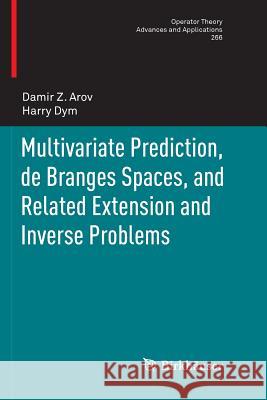Multivariate Prediction, de Branges Spaces, and Related Extension and Inverse Problems » książka
topmenu
Multivariate Prediction, de Branges Spaces, and Related Extension and Inverse Problems
ISBN-13: 9783030099442 / Angielski / Miękka / 2018 / 405 str.
Kategorie:
Kategorie BISAC:
Wydawca:
Birkhauser
Seria wydawnicza:
Język:
Angielski
ISBN-13:
9783030099442
Rok wydania:
2018
Wydanie:
Softcover Repri
Numer serii:
000130690
Ilość stron:
405
Waga:
0.58 kg
Wymiary:
23.39 x 15.6 x 2.18
Oprawa:
Miękka
Wolumenów:
01
Dodatkowe informacje:
Wydanie ilustrowane











